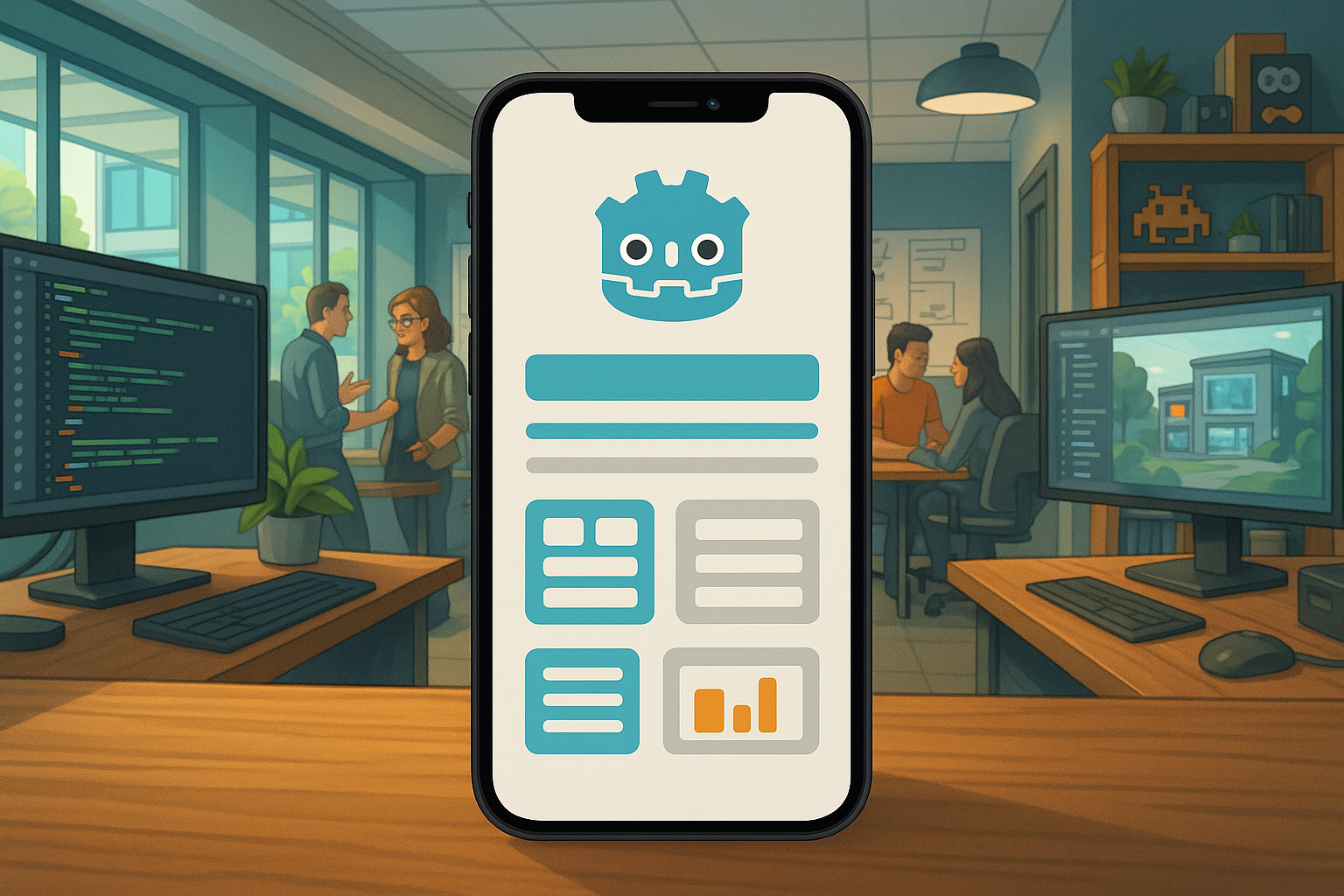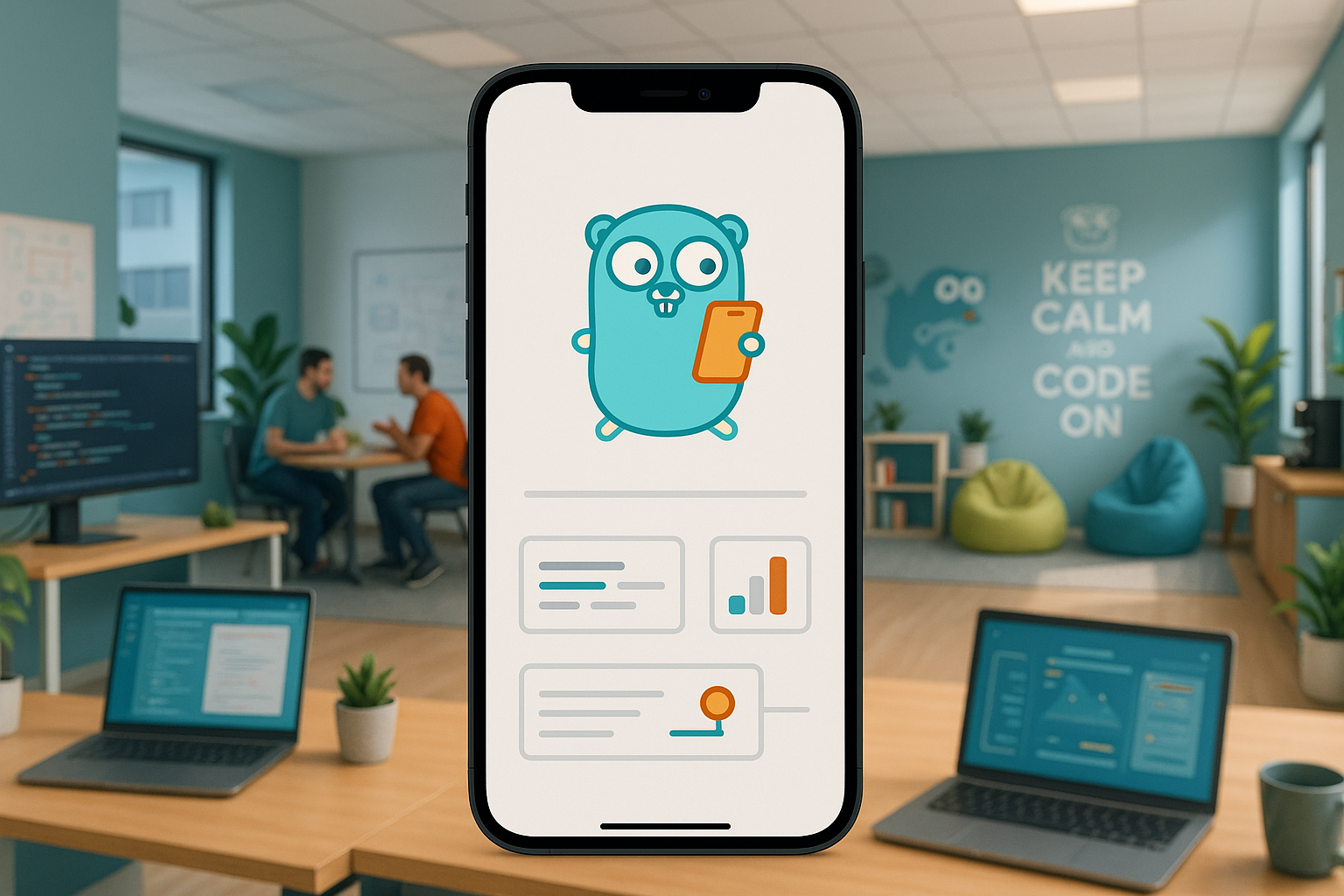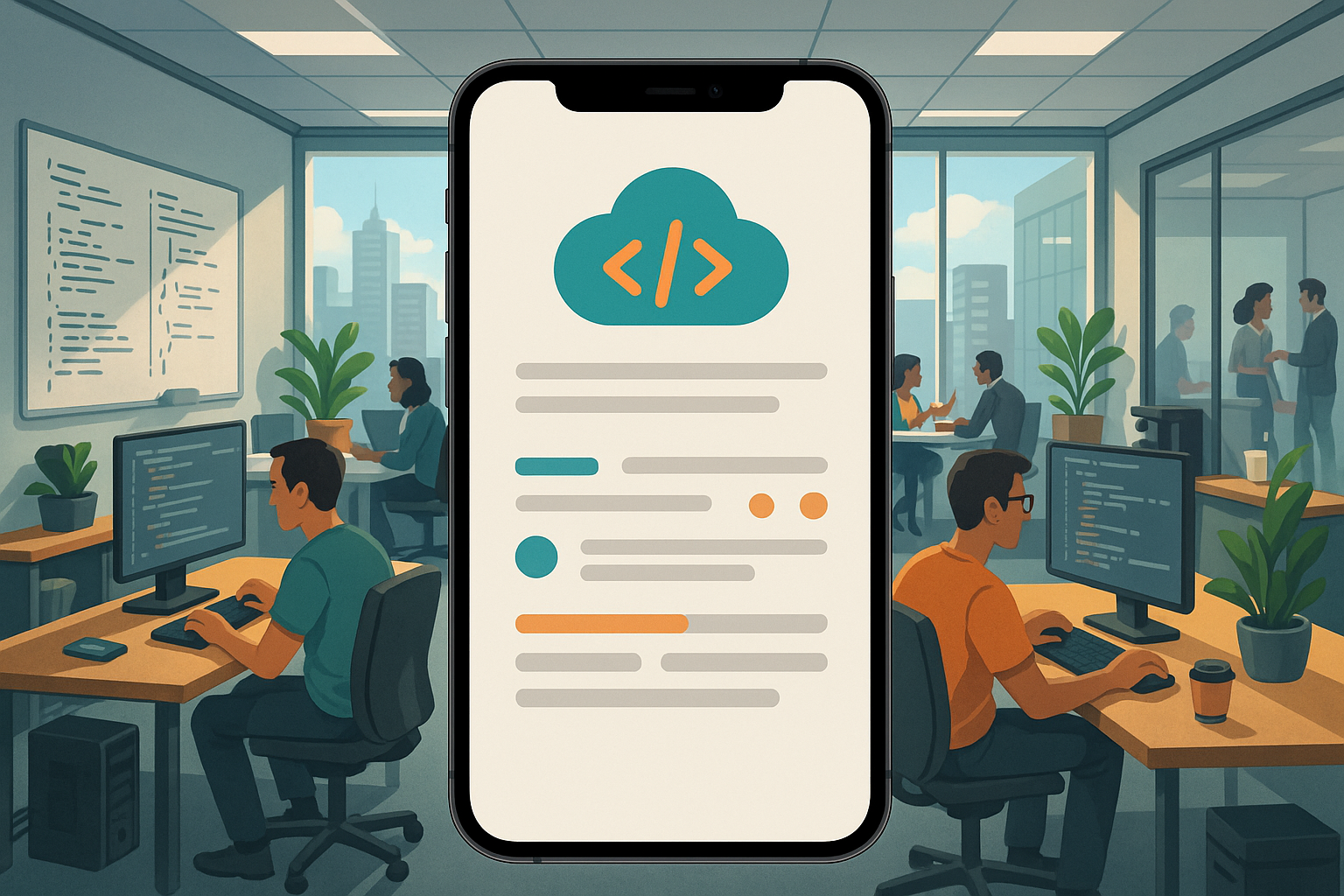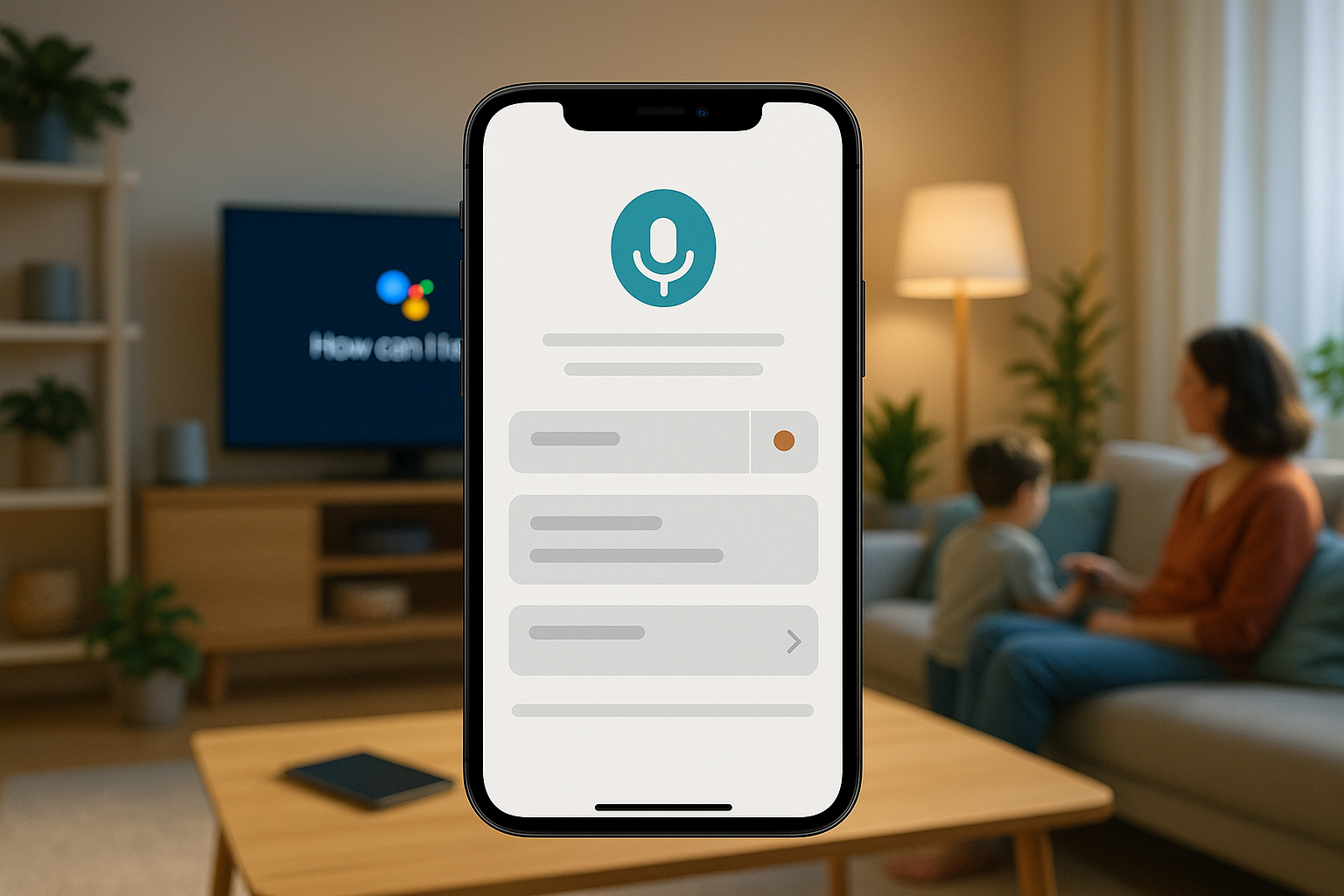Introduction
Godot is an open-source engine celebrated within the game development community for its flexibility, efficiency, and robust feature set. It has empowered countless developers to create engaging, high-performance games across every major platform. However, a growing number of innovators and businesses are looking beyond entertainment, asking a critical question: Can Godot’s power be harnessed for non-game applications? The answer is a resounding yes, but it comes with a unique set of challenges. Developing a sophisticated Godot application, especially one that needs to integrate with traditional app ecosystems, is far from straightforward. The path is often fraught with technical hurdles, from creating native-feeling user interfaces to handling complex low-level system interactions.
This article serves as a comprehensive guide to the world of Godot app development. We will delve into what defines a Godot application, explore the significant difficulties you might face developing one in-house, and showcase the diverse types of non-game apps being built with the engine today. Furthermore, we will discuss the factors that influence development costs and introduce the leading companies that can help turn your vision into a reality.
As a top US AI-powered mobile app development firm, we at MetaCTO have seen firsthand the immense potential and the hidden complexities of this technology. We specialize in not just building apps, but in solving the hard technical problems that stand in the way of innovation. A core part of this expertise lies in integrating powerful engines like Godot into polished, user-friendly mobile applications. This guide will provide you with the essential information you need, whether you’re considering Godot for a new project or looking to embed its capabilities into an existing product.
What is a Godot App?
At its core, Godot is an open-source engine renowned for its flexibility and efficiency in creating interactive experiences. While its primary reputation is in crafting 2D and 3D games, a “Godot app” is any application built using this powerful framework, regardless of its purpose. The very editor used to build Godot projects is, in fact, one of the most complex and impressive examples of a Godot application, showcasing its capability to handle intricate user interfaces, file system management, and complex state logic—hallmarks of a sophisticated productivity tool.
This inherent power makes Godot a compelling choice for a wide spectrum of non-game applications. Developers and businesses are leveraging it to build software that requires high-performance graphics, complex simulations, or custom user experiences that standard application frameworks struggle to deliver. These are not just simple utilities; they are often highly specialized tools that push the boundaries of what a desktop or mobile application can do.
For example, Godot is being used to create:
- Interactive Art: Dynamic art installations and immersive sound art projects that react to user input or environmental data.
- Specialized Tools: Custom audio/video production tools, 3D parts editors, and even office productivity applications that benefit from a real-time rendering pipeline.
- Simulation and Training: Complex robot simulators and edutainment software that require accurate physics and 3D visualization.
- Public-Facing Systems: Interactive kiosks and custom presentation platforms designed for engagement and visual flair.
Essentially, a Godot app is any software that chooses Godot’s real-time engine as its foundation. This choice prioritizes performance, cross-platform reach, and the ability to create visually rich, highly customized interactive environments over the cookie-cutter components offered by traditional app development kits.
Reasons that it is Difficult to Develop a Godot App In-House
While Godot is powerful, venturing into non-game app development with an in-house team presents significant and often underestimated challenges. These difficulties stem from the fact that Godot, at its heart, is not primarily advertised or architected as a general-purpose application framework. An awareness of these hurdles is crucial for any team considering this path.
A Small and Specialized Community
While the Godot community as a whole is vibrant and growing, the sub-community focused on non-game applications is still very small relative to that of game development or traditional frameworks like React Native or Flutter. This has direct consequences for your development process. When your team encounters a problem specific to, for example, integrating a native file picker or handling a specific business peripheral, they will find fewer tutorials, community-contributed solutions, and experienced developers to ask for help. The path is less traveled, meaning your team will spend more time on foundational research and development rather than building your core features.
The User Interface (UI) Conundrum
Perhaps the most significant hurdle for general-purpose app development in Godot is the user interface. Godot’s own UI toolkit is designed for games, where custom, stylized interfaces are the norm. However, when building a desktop productivity app or a utility, users expect the application to look and feel like a native part of their operating system.
- “Out of Place” Design: Applications developed with Godot’s standard UI controls will almost always look ‘out of place’ on a Windows, macOS, or Linux desktop. They lack the native widgets, fonts, and interaction behaviors that users are accustomed to.
- Lack of Native Elements: This lack of a way to create more OS-native GUI elements is a major hindrance to wider adoption for general-purpose app development. It can make an otherwise powerful application feel unprofessional or difficult to use.
- Complex Workarounds: The theoretical solution is to hook Godot up to a native UI toolkit like Qt or GTK+. However, this is a technically demanding task that is not well-documented. Furthermore, it can introduce complex licensing issues that your business must navigate, adding legal overhead to the technical challenges.
Low-Level Functionality and Engine Limitations
Modern applications often need to interact with the operating system or hardware at a deep level. Godot’s game-centric design can make this surprisingly difficult without specialized knowledge.
- GDNative as a Necessity: For certain kinds of applications, you are fundamentally limited without using GDNative (or its successor, GDExtension). This system allows you to write performance-critical code in languages like C++ and bind it to the engine. Without it, handling more “low-level” stuff, such as processing real-time MIDI input for an audio application, can be a non-starter.
- The Recompilation Barrier: If GDNative isn’t sufficient, the only remaining option is to download Godot’s source code, write your own C++ modules, and recompile the entire engine from scratch. This is a massive increase in complexity and requires a level of engineering expertise far beyond typical app development. It creates a significant maintenance burden, as you must repeat this process for every new version of Godot you wish to adopt.
The Mobile Integration Challenge
For businesses focused on the mobile market, a particularly thorny challenge emerges: embedding Godot within a traditional native application. Most Godot apps are full-fledged, full-screen experiences. But what if you only want to use Godot for one part of your app, like an interactive 3D product viewer, a gamified onboarding sequence, or an AR feature within a larger e-commerce app?
This is where in-house teams often hit a wall. Public documentation and resources on embedding Godot as a view within an existing native iOS or Android app are incredibly scarce. As one developer noted, repositories like the one for embedding Godot in React Native are often old and haven’t been maintained in years, making their usefulness for modern projects highly uncertain. This task requires a rare, dual expertise in both the Godot engine’s internals and the intricacies of native mobile development—a skill set that is difficult and expensive to hire for. An agency partner with proven experience in this specific area can be the difference between a successful project and a failed one.
Different Types of Godot Apps
Despite the challenges, the versatility of the Godot engine has given rise to a fascinating and diverse ecosystem of non-game applications. Innovators are drawn to its real-time rendering capabilities and cross-platform nature to build experiences that would be difficult or impossible with conventional tools. The types of apps being created can be broadly categorized by their purpose.
Creative and Artistic Applications
Godot’s strong visual and interactive foundation makes it a natural fit for projects where creativity is paramount. Artists and designers are using it to escape the confines of static media and create dynamic, responsive works.
- Art Installations: Interactive museum exhibits that change based on viewer presence or input.
- Sound Art Projects: One user, keymapper, detailed plans to use Godot specifically for a sound art project, likely leveraging its real-time processing to manipulate audio in response to interactive elements.
- Custom Presentations: For sales pitches or keynotes that need to go beyond PowerPoint, Godot can create visually stunning, non-linear presentations that captivate an audience.
Professional Tools and Utilities
A growing number of developers are building serious, work-oriented applications in Godot, proving its viability for productivity. In these cases, the benefits of a custom, high-performance interface outweigh the challenges of non-native UI.
- Audio/Video Tools: Custom software for media production that requires real-time feedback and a flexible interface.
- Productivity and Office Apps: One developer, uriel, reported successfully reproducing C++ applications in Godot with ease and is actively working on office and media production applications.
- Photo and Data Organizers: Another user, anahuj, came to Godot specifically to explore rewriting a simple photo arranger, while someone else vaguely recalled a project to create a database application.
Simulation and Visualization
This is one of the strongest non-game use cases for Godot. Its 3D engine, physics simulation, and shader capabilities are perfect for creating digital twins and data visualizations.
- Robotics and Engineering: A user named digitorus is considering Godot for a robot simulation project and also sees Godot 3 as a general 3D visualization tool. They planned to compare it directly with Unity for building a 3D parts editor, demonstrating its perceived capability in industrial design.
- Edutainment: Educational software that uses gamification and interactive 3D models to teach complex subjects in a more engaging way.
Specialized Kiosk and Commercial Applications
The ability to create a locked-down, visually rich, and interactive experience makes Godot an excellent choice for public-facing hardware.
- Interactive Kiosks: Information booths, retail displays, and self-service terminals can provide a much richer experience than standard web-based kiosk software.
The sheer breadth of these examples—from art and office apps to robotics—demonstrates that with the right expertise, Godot can be a powerful tool for almost any software project that requires a high degree of interactivity and visual control.
Cost Estimate for Developing a Godot App
A common question from any business exploring a new technology is, “What will it cost?” When it comes to Godot app development, providing a single, fixed price is impossible. No official cost breakdowns are available, and the reality is that the final investment depends entirely on the unique scope and complexity of your project. An application’s cost is not determined by the engine itself, but by the labor, expertise, and time required to build, test, and launch it.
However, we can outline the key factors that will influence the overall development cost. Understanding these variables will help you budget effectively and have a more productive conversation with a development partner.
Key Cost Drivers
- Scope and Complexity: The single biggest factor is the project’s scope. Is it a simple 2D informational app with a few screens, or is it an immersive 3D environment with advanced physics and interactive elements? A 3D parts editor for an industrial client will have a vastly different budget than a simple kiosk presentation.
- Feature Set: Every feature adds to the development timeline. Functionality like multiplayer capabilities for a collaborative tool, custom AI behavior for a simulation, or integration with augmented reality (AR) toolkits will significantly increase costs.
- Platform Support: Developing for a single platform (e.g., Windows desktop) is the most straightforward. However, if your application needs to work seamlessly across multiple devices and platforms—such as iOS, Android, web, and desktop—the cost will rise due to the need for platform-specific testing, optimization, and deployment pipelines.
- Level of Customization: Does your app require intricate custom mechanics or interactive elements that stand out? The more you deviate from standard functionality, the more developer hours are needed for custom scripting, shader programming, and logic implementation.
- Integration with External Systems: If your Godot app needs to communicate with backend servers, databases, third-party APIs, or specialized hardware, this integration work adds another layer of complexity and cost.
- Development Partner and Process: The partner you choose and the process they follow will impact the budget. A comprehensive, end-to-end service that includes concept design, prototyping, iterative development, deployment, and post-launch support will represent a larger investment than a simple coding contract. An agile methodology, while highly effective, requires continuous involvement and can influence the final cost as the project evolves.
Because of these variables, the best approach is to seek expert consultation. At MetaCTO, our process begins with a deep dive into your goals to create a detailed Product Strategy Roadmap. This allows us to provide a clear, well-defined scope and a reliable cost estimate, ensuring there are no surprises down the line. To get a real sense of what your project might cost, you need to talk to an expert who can assess your specific needs.
Top Godot App Development Companies
Choosing the right development partner is critical to the success of your Godot application. You need a team with not only technical proficiency in the engine but also a strategic understanding of your business goals. While many firms focus exclusively on gaming, others possess the broader engineering expertise required for complex app development and integration.
1. MetaCTO
As a leading US-based AI and mobile app development agency, we position ourselves at the intersection of powerful technology and strategic business solutions. While many Godot developers focus on building standalone games, our core expertise lies in solving a more complex problem: seamlessly integrating the Godot engine into sophisticated, feature-rich native mobile applications.
We understand that you may not want your entire app to be a “Godot app.” You may have an existing e-commerce platform, a healthcare app, or a social network, and you want to add a high-performance Godot-powered feature—like a 3D product customizer, a gamified therapy module, or an interactive data visualization. This is where we excel.
Our team of expert engineers, with over 20 years of experience launching more than 120 successful projects, possesses the deep technical knowledge of both Godot and native mobile frameworks (iOS and Android) required to bridge this gap. We handle the difficult architectural work to ensure Godot runs as an embedded component within your app, delivering incredible visual performance without sacrificing the native look and feel of the surrounding user interface. Our Rapid MVP Development process allows us to validate these complex integrations quickly, helping you go to market faster and with less risk. We are not just a Godot shop; we are your strategic partner for building robust, scalable, and innovative mobile products.
2. Specialized Godot Studios
Beyond integrators like us, the market also includes highly skilled studios that specialize in end-to-end Godot development. These companies are an excellent choice for projects where the entire application is to be built within the Godot engine. Based on the profile of a leading Godot development company, here is what you can expect from such a partner:
- End-to-End Development: These studios typically handle every aspect of the development process, from initial concept design and prototyping all the way through to final deployment and post-launch support.
- Deep Game and Interactive Expertise: Their teams consist of passionate experts who know how to push the limits of the engine. They have extensive experience in creating everything from sleek 2D platformers to immersive 3D RPGs, hyper-casual mobile games, and even complex MMORPGs and AR experiences.
- Cross-Platform Prowess: A key strength is their ability to create games and apps that work seamlessly across multiple devices and platforms, ensuring you can reach the maximum audience on mobile, web, and desktop.
- Structured and Agile Process: Top firms follow agile methodologies to keep clients involved throughout the project. They use wireframes and prototypes to refine the user experience early and pride themselves on transparent processes and timely delivery.
- Performance Optimization: They prioritize performance, ensuring that applications run smoothly on all targeted platforms with fast loading times and minimal resource usage, which is critical for user retention.
These specialized studios are masters of the Godot environment and are ideal for building standalone, visually rich interactive experiences from the ground up.
Integrating Godot into Your Mobile App: The MetaCTO Advantage
One of the most powerful but technically demanding ways to use Godot is not to build an entire app with it, but to embed it as a high-performance component within a larger, native mobile application. Imagine an e-commerce app where users can view and interact with a photorealistic 3D model of a product, or a corporate training app that includes a complex, gamified simulation. This approach gives you the best of both worlds: the rich, real-time rendering of Godot and the familiar, OS-native UI/UX of a traditional mobile app.
However, as discussed, this is where many in-house teams and even specialized game studios struggle. The task of making Godot run inside a “view” on iOS or Android is poorly documented. The developer community has largely focused on full-screen Godot exports, leaving a knowledge gap for those who want to pursue this hybrid approach. Existing tools and code repositories are often outdated and unreliable for use in a modern production environment.
This is precisely the challenge we at MetaCTO are built to solve. We are not just Godot developers; we are expert mobile app architects. Our team has deep, foundational expertise in the native development environments of both iOS (Swift) and Android (Kotlin/Java), combined with a thorough understanding of the Godot engine’s internals. We know how to manage the lifecycle of a Godot instance within a native app, handle the complex communication bridge between the two environments, and ensure that resources are managed efficiently to prevent battery drain and performance issues.
By partnering with us, you don’t have to choose between a powerful 3D experience and a polished, native app. We provide the critical engineering to fuse them together, allowing you to:
- Add stunning 3D features to your existing mobile app without a complete rewrite.
- Leverage Godot’s physics and graphics for specific modules while keeping the rest of your app native.
- Avoid the “out of place” UI problem by containing the Godot experience to the parts of your app where it makes sense.
- De-risk your project by relying on a partner who has navigated these complex technical waters before.
This capability to act as the integration layer between world-class mobile app design and a powerful rendering engine is what sets MetaCTO apart. We turn a significant technical roadblock into a strategic advantage for your product.
Conclusion
Godot has rightfully earned its place as a top-tier open-source game engine. Yet, its potential extends far beyond gaming, offering a powerful platform for a new generation of creative, professional, and industrial applications. As we’ve explored, this path is not without its obstacles. Developing a non-game Godot app in-house means confronting a smaller support community, significant UI/UX challenges, and the need for deep, low-level engineering expertise to unlock its full potential.
Throughout this guide, we have outlined these difficulties while also showcasing the incredible diversity of apps—from art installations and robot simulators to productivity tools—that are being successfully built by those who can navigate the complexity. We’ve discussed how project costs are tied directly to scope and features and highlighted the different types of development partners available, from specialized studios that build entire experiences in Godot to expert integrators like MetaCTO. Our unique focus is on solving one of the most difficult challenges: seamlessly embedding Godot’s powerful rendering capabilities into native mobile applications, giving you unparalleled performance without compromising user experience.
Don’t let these technical hurdles prevent you from realizing your vision. The ability to integrate real-time 2D or 3D interactivity can be a game-changer for your product. If you’re ready to explore how Godot can elevate your new or existing mobile app, the next step is to talk to an expert.
Contact a Godot expert at MetaCTO today to discuss your project. We’ll help you build a clear roadmap to successfully integrate Godot into your product and unlock its full potential.






